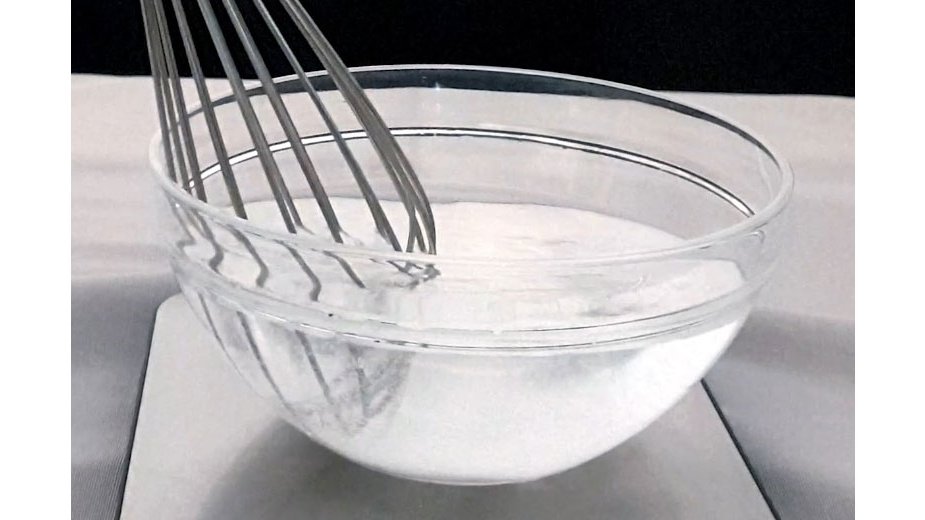Reverse spherification is a fascinating culinary technique that allows chefs and food enthusiasts to create large, impressive spheres with a delicate gel-like membrane and a liquid core. In this blog post, we will guide you through the step-by-step process of making large spheres using sodium alginate and calcium lactate, providing precise measurements and ratios to ensure success. Additionally, we’ll share some inspiring ideas for dishes and recipes that showcase these remarkable culinary creations.
Preparation of Reverse Spherification
To begin, you will need the following ingredients and equipment:
- Sodium alginate solution: 0.5% to 1% sodium alginate dissolved in water
- Calcium lactate solution: 2% to 4% calcium lactate dissolved in your chosen liquid (e.g., juice, broth, or sauce)
- Sphere molds: Silicone molds with half-sphere cavities, large enough to create your desired sphere size
- A kitchen board or a stable, flat surface
- A fridge with enough space to accommodate the sphere molds
Step-by-Step Guide to Reverse Spherification
- Prepare the sodium alginate bath: Mix the sodium alginate solution by dissolving 0.5% to 1% sodium alginate in water. Allow it to rest for a few hours or overnight to remove any air bubbles and achieve a smooth consistency.
- Prepare the calcium lactate solution: Dissolve 2% to 4% calcium lactate in your chosen liquid, such as fruit juice, broth, or sauce. Ensure that the solution is well mixed and free of any lumps.
- Fill the sphere molds: Carefully pour the calcium lactate solution into the silicone sphere molds, filling each cavity to the top. Place the filled molds onto a kitchen board or another stable, flat surface, ensuring that the liquid remains level in each cavity.
- Refrigerate the molds: Transfer the filled molds to the refrigerator and allow the liquid to set for at least 2-4 hours. This waiting time will ensure that the calcium lactate solution forms a semi-solid state, which is necessary for successful reverse spherification.
- Prepare the spheres: Remove the semi-solid calcium lactate spheres from the molds and gently drop them into the sodium alginate bath. Allow the spheres to rest in the bath for 3-5 minutes, as the thin gel-like membrane forms around the liquid core.

Inspirational Ideas
Large spheres created through reverse spherification can elevate a variety of dishes, both savory and sweet. Here are some ideas to spark your culinary creativity:
- Create a burst of flavor in a salad by using spheres filled with a tangy vinaigrette or a creamy dressing.
- Add an unexpected twist to a seafood dish with spheres filled with a zesty citrus sauce or a savory broth.
- Enhance a dessert with spheres filled with fruit coulis, chocolate sauce, or a sweetened cream, providing a delightful surprise for your guests.
Conclusion
Reverse spherification is a captivating and versatile technique that enables you to create impressive large spheres with sodium alginate and calcium lactate. By following the precise steps, measurements, and ratios provided in this guide, you can confidently experiment with this technique and explore endless culinary possibilities.
Let your imagination run wild as you incorporate these stunning spheres into your dishes and recipes, showcasing your creativity and passion for modern gastronomy!
Try one of these recipes with Sodium Alginate
-
Apple Caviar Pearls Recipe

Exploring the Art of Molecular Gastronomy: Apple Caviar Pearls Welcome to the fascinating world of molecular gastronomy, where culinary science meets artistry to create extraordinary dining experiences. Today, we’re diving into the innovative technique of spherification to craft Apple Caviar Pearls—a modern culinary marvel that transforms simple apple juice into elegant, flavorful spheres. These tiny…
-
Sodium Alginate Bath Recipe

Sodium Alginate Bath In the innovative world of modernist cuisine, sodium alginate stands out as a transformative ingredient. Its unique properties allow culinary professionals and enthusiasts alike to push the boundaries of texture and form in gastronomy, leading to stunning dishes and drinks that are as visually appealing as they are delicious. Here’s a closer…
-
Cucumber Gimlet Recipe

A modernist twist on the classic Cucumber Gimlet Welcome to the fascinating world of modernist cuisine where traditional recipes are transformed into sensational experiences. Today, we’re revisiting a beloved classic, the Cucumber Gimlet, and infusing it with a dash of culinary science to delight both your palate and your curiosity. The Timeless Appeal of the…
